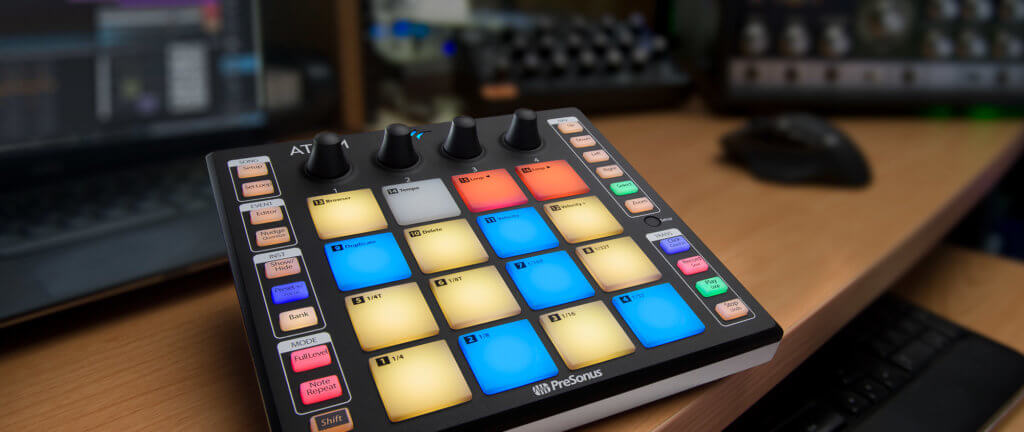Studio One has become our go-to DAW, so it’s great to see PreSonus continue their hardware output to supplement the software side of things. We got our first hands-on look at the new Atom Controller at NAMM, and were pretty impressed with its build quality and abilities right out of the gate.
Yes, it’s another pad-style controller, but it does what it does, and it does it well. Integration with Studio One is tight as a drum, no drivers or other nonsense to get in the way (at least on our studio’s Mac). We fired up a new session, opened up some of our fave drum samples, and everything mapped and functioned instantly with no fussiness. Playing finger-style was a breeze, and we were able to instantly lay down grooves and trigger samples without even glancing at the manual. That said, there are a lot of function buttons on the front panel, and it may be a bit daunting to a new user who’s never played with a controller like this before. Our only gripe would be some more in-depth documentation included in the box, but that’s an industry-wide pet peeve, not necessarily a PreSonus-specific one.
The Atom Controller is lightweight (we’d be surprised if it weren’t, considering it’s just passing data back and forth), so it it’ll slide nicely into a DJ backpack for gigs or studio work. The knobs and buttons all feel nice and firm, the pads themselves offer a good amount of touch sensitivity while still being firm enough to allow for the proper pressure-sensitive playing many of us have become accustomed to over the years.
All in all, not too much more to say. The price is right, too, at just $149. For electronic artists who’re already in the PreSonus ecosphere, it’s a no brainer. We did test it out with a few other DAWs, and since everything is assignable and velocity-sensitive, we were laying down soft-synth performances with relative ease after a quick initial setup. This would be great for live setups, as well, since you can trigger loops and parts easily on your laptop while performing live in real-time with other hardware synths or drum machines.
PROS:
Lightweight, great pads, fantastic Studio One integration
CONS:
Learning curve might intimidate new users.
STREET PRICE:
$150
